2 February 2025
Sports have always been about more than just the game. From the moment the ball is kicked, the whistle blown, or the race begins, we find ourselves swept up in the magic of athletic competition. We cheer for our favorite teams, idolize individual players, and often elevate sports stars to heroic status.
But what happens when those heroes fall? What happens when the very athletes we admire for their physical prowess, determination, and success turn out to have dark sides? When their personal lives or actions off the field come crashing down, it leaves us with a bitter taste. It not only tarnishes their legacy but also forces us to confront the uncomfortable truth: being exceptional at sports doesn’t always equate to being an exceptional human being.
So, why do we put athletes on pedestals, and why does it hurt so much when they fall from grace? Let’s dig deeper into the dark side of sports icons and explore the complex relationship between athletes and their fans.
![]()
The Cult of the Sports Hero
From Muhammad Ali to Michael Jordan, from Serena Williams to Tom Brady, sports icons have always been larger-than-life figures. We don’t just admire them for their athletic abilities; we often see them as role models, symbols of hard work, perseverance, and success.But why? Why do we expect athletes to be more than just excellent players?
The answer is simple: we love a good story. Sports provide some of the most compelling narratives out there, filled with drama, triumph, and occasionally heartbreak. Athletes are the protagonists of these stories, and we project our own hopes, dreams, and values onto them. In a way, they become avatars for what we aspire to be.
But here’s the catch: no one—no matter how talented or successful—is perfect. And when the flaws of our heroes come to light, it often shakes us to our core.
The Pedestal Effect
We live in a world where athletes are often treated like gods. Social media, endorsement deals, and 24/7 sports coverage have turned them into omnipresent figures. They’re not just athletes—they’re celebrities. And with that celebrity status comes immense pressure.We place them on pedestals, expecting them to not only perform on the field but also behave impeccably off it. It’s a nearly impossible standard to meet. When they inevitably stumble, the fall is magnified.
Think of it like this: when a regular person makes a mistake, it might be a blip on the radar. But when a sports star messes up, it’s like watching a skyscraper collapse in slow motion. The higher they rise, the harder they fall.
![]()
Highs and Lows: A History of Fallen Sports Icons
Throughout history, we’ve witnessed the rise and fall of many sports figures. Some of these stories are shocking, while others are downright tragic. Let’s take a closer look at some of the most infamous cases of sports icons who crashed and burned.1. Lance Armstrong: From Hero to Zero
Few athletes dominated their sport like Lance Armstrong dominated cycling. After beating cancer and going on to win seven consecutive Tour de France titles, Armstrong was a global icon. He was the face of perseverance, grit, and triumph over adversity. His Livestrong Foundation became synonymous with hope and charity.But behind the scenes, Armstrong was hiding a dark secret. In 2012, after years of denials, he was finally exposed for using performance-enhancing drugs (PEDs). His fall from grace was swift and brutal. He was stripped of his titles, banned from the sport, and his reputation was shattered.
For many, Armstrong’s story wasn’t just about doping—it was about betrayal. He had built his entire image on being a fighter, a survivor, and a role model. When the truth came out, it wasn’t just his legacy that was damaged; it was the trust of millions of fans.
2. Tiger Woods: The Scandal That Shocked the World
Tiger Woods was more than just a golfer. He was a global phenomenon, a man who broke down racial barriers in a predominantly white sport, and one of the most successful athletes of all time. For years, he seemed untouchable, both on and off the golf course.That is, until 2009, when a car accident outside his home triggered a chain of events that would expose Woods’ secret life. Multiple extramarital affairs came to light, and his personal life unraveled in the public eye. Sponsors dropped him, his marriage crumbled, and his golf game suffered.
Woods’ fall wasn’t just about infidelity—it was about the image he had cultivated. He had been the clean-cut, disciplined athlete who seemed to have it all. When that image was shattered, it felt like a collective heartbreak for his fans.
3. Michael Vick: A Career Derailed by Dogfighting
Michael Vick was once considered one of the most electrifying players in the NFL. His speed, agility, and arm strength made him a fan favorite, and he was poised to have a Hall of Fame career.But in 2007, Vick’s life took a drastic turn. He was convicted for his role in a dogfighting operation, and the details of the abuse were horrifying. Vick served time in federal prison, and his football career seemed all but over.
To his credit, Vick later expressed remorse and worked to rebuild his image, but the damage was done. His involvement in such a brutal and illegal activity shocked the world and left many fans questioning how someone so talented could make such terrible choices.
4. Oscar Pistorius: A Tragic Fall from Grace
Oscar Pistorius was a symbol of triumph over adversity. Born without fibulas, he had both legs amputated below the knee at just 11 months old. Despite this, he went on to become a Paralympic champion and even competed in the 2012 Olympics against able-bodied athletes. His story was one of inspiration and courage.But in 2013, Pistorius’ life took a dark turn. He was charged with the murder of his girlfriend, Reeva Steenkamp, after he shot her through a bathroom door in his home. Pistorius claimed it was an accident, thinking she was an intruder, but he was eventually convicted of culpable homicide (later upgraded to murder on appeal).
Pistorius’ fall was particularly tragic because of the hope and inspiration he had provided to millions of people around the world. His story went from one of overcoming obstacles to one of violence and tragedy.
![]()
The Impact on Fans
When a sports icon falls from grace, it’s not just their career that suffers—it’s their fans. For many of us, sports figures represent something bigger than ourselves. They’re symbols of hope, determination, and excellence. When those symbols are tarnished, it can feel like a personal betrayal.But why does it hurt so much when athletes mess up? Simply put, we invest emotionally in them. We follow their careers, celebrate their victories, and commiserate with their losses. When they fall, it feels like we’ve been let down, too.
It’s like discovering that your favorite superhero has a dark side. It doesn’t just change the way you see them—it changes the way you see the world.
The Role of the Media
The media plays a significant role in shaping how we perceive athletes. In today’s world, where every move is scrutinized, it’s almost impossible for athletes to keep their private lives private. Social media, paparazzi, and 24-hour news cycles mean that even the smallest misstep can be blown out of proportion.When athletes make mistakes, the media is often quick to pounce. Headlines scream about scandals, and the public is eager to consume the drama. In many ways, the media builds these athletes up, only to tear them down when they fall.
![]()
Redemption: Is It Possible?
The road to redemption is a tricky one. Some athletes manage to rebuild their careers and regain the trust of fans, while others are never able to recover from their mistakes.Take Michael Vick, for example. After serving time in prison, Vick worked hard to repair his image. He returned to the NFL, played at a high level, and became an advocate for animal rights. While some fans will never forgive him, others have chosen to give him a second chance.
Tiger Woods is another example of redemption. After years of personal and professional struggles, he made a stunning comeback in 2019, winning the Masters and reminding the world of his incredible talent. His victory was seen by many as a story of perseverance and redemption.
But not all athletes are able to bounce back. Lance Armstrong, for example, remains a pariah in the world of cycling. Despite his efforts to apologize and rebuild his image, the damage done by his doping scandal was too great, and his legacy will forever be tainted.
Conclusion: The Fragile Nature of Hero Worship
At the end of the day, athletes are human. They make mistakes, just like the rest of us. But because of their fame and status, their mistakes are often magnified and scrutinized in ways that ours never will be.When sports icons fall, it forces us to confront our own expectations and the unfair standards we often place on them. It’s a reminder that, as much as we’d like to believe otherwise, our heroes are just as flawed as everyone else.
So, the next time you find yourself idolizing an athlete, remember: even heroes have their faults. And when they fall, it doesn’t make their accomplishments any less impressive—it just makes them human.





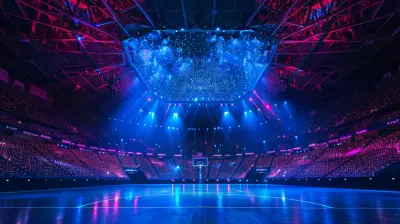

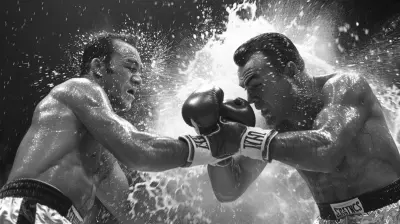
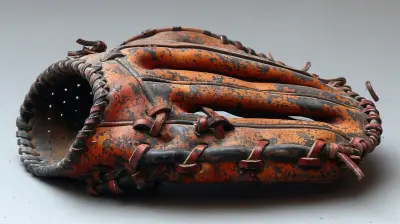

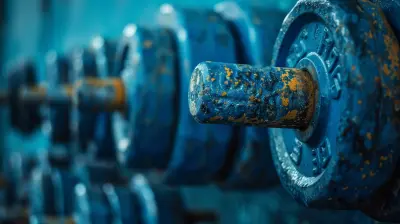
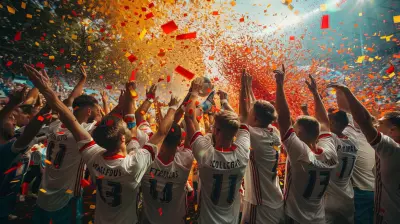

Makayla McEachern
Even legends stumble; glory breeds shadows.
February 24, 2025 at 5:56 AM